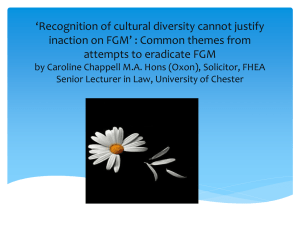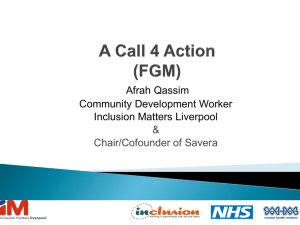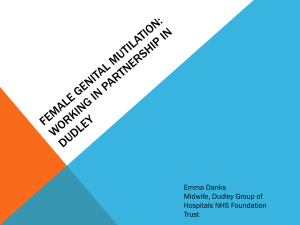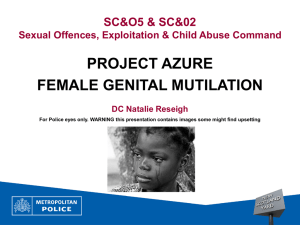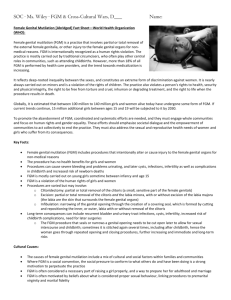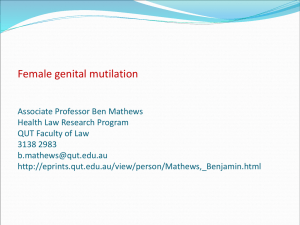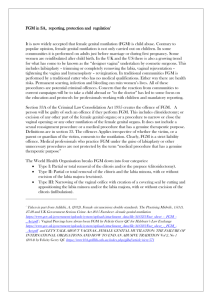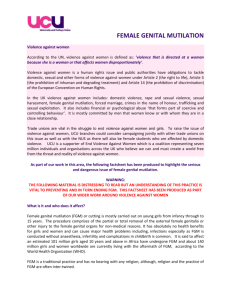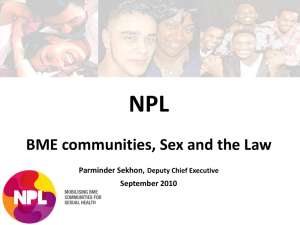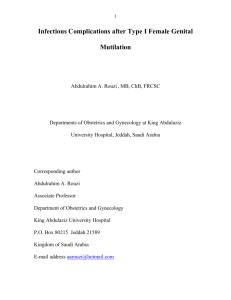Guidance for schools leaflet_ FGM
advertisement
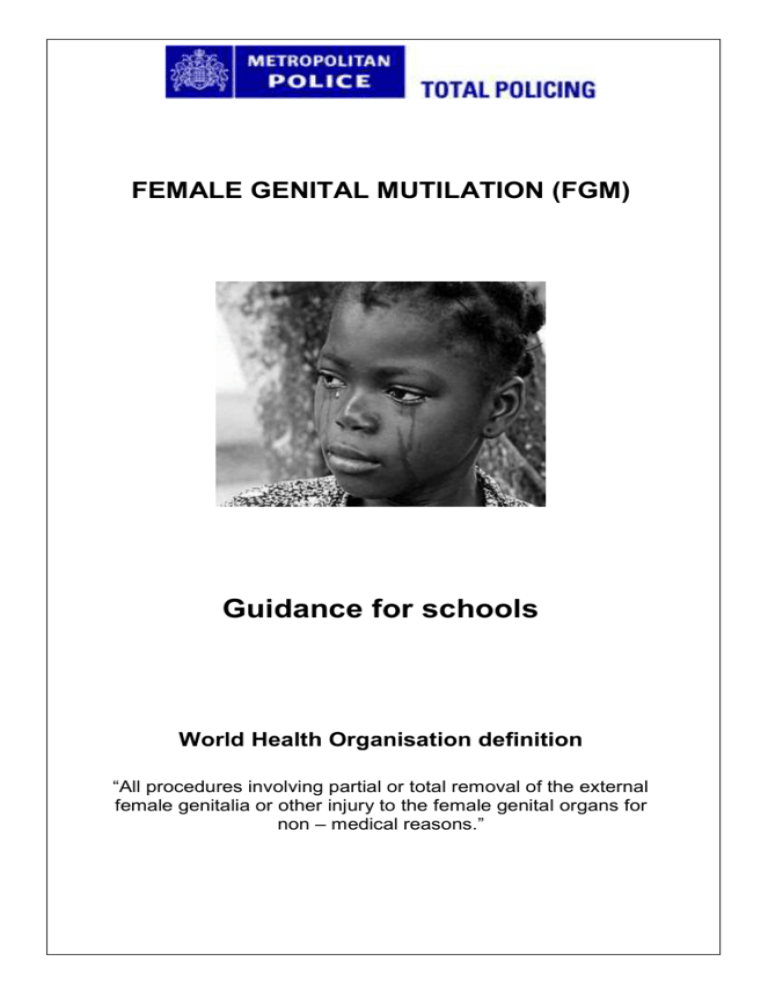
FEMALE GENITAL MUTILATION (FGM) Guidance for schools World Health Organisation definition “All procedures involving partial or total removal of the external female genitalia or other injury to the female genital organs for non – medical reasons.” School staff can play a key role in protecting girls from FGM. With your help we can identify those at risk and together we can protect them from being harmed. FGM is child abuse No health benefits, only harm FGM is recognized by the United Nations as a violation of the human rights of girls and women. It is nearly always carried out on minors (between infancy and age 15) and is a violation of the rights of children. It is illegal in the UK and it is child abuse. FGM is under reported in this country. Over 24,000 girls under the age of 15 years in England and Wales are at risk from undergoing FGM either in this country or abroad. The summer holiday’s is the period when girls are mostly at risk of FGM. With your help we can identify those at risk and together we can protect girls from undergoing FGM. FGM has no health benefits, and it harms girls and women in many ways. It involves removing and damaging healthy and normal female genital tissue, and interferes with the natural functions of girls' and women's bodies. Immediate complications can include severe pain, shock, hemorrhage (bleeding), tetanus or sepsis (bacterial infection), urine retention, open sores in the genital region and injury to nearby genital tissue. FGM is classified into four major types: 1. Clitoridectomy: partial or total removal of the clitoris (a small, sensitive and erectile part of the female genitals). 2. Excision: partial or total removal of the clitoris and the labia minora, with or without excision of the labia majora (the labia are "the lips" that surround the vagina). 3. Infibulation: narrowing of the vaginal opening through the creation of a covering seal. The seal is formed by cutting and repositioning the inner, or outer, labia, with or without removal of the clitoris. 4. Other: all other harmful procedures to the female genitalia for non-medical purposes, e.g. pricking, piercing, incising, scraping and cauterizing the genital area. Long term consequences can include: recurrent bladder and urinary tract infections; cysts; infertility; an increased risk of childbirth complications and newborn deaths; A need for further surgery. For example, the FGM procedure that seals or narrows a vaginal opening (type 3 above) needs to be cut open later to allow for sexual intercourse and childbirth. Sometimes it is stitched again several times, including after childbirth, hence the woman goes through repeated opening and closing procedures, further increasing and repeated both immediate and long-term risks. Who is at risk of FGM ? The communities in the UK that girls are most at risk of FGM include the Somali, Sudanese, Sierra Leone, Gambian, Liberian, Egyptian, Nigerian, Ethiopian and Eritrean communities. Non-African communities that practice FGM include Yemeni, Afghani, Kurdish, Indonesian, Malaysian and Pakistani Bohra Muslim communities. FGM indicators The girl may confide that she is to have a “special procedure “ which will make her a woman or talk of a ceremony taking place for her or other siblings. There may be talk of vaccinations or talk of absence from school. Girls are more at risk of FGM during school summer holidays A girl or her family may talk about a long holiday to her country of origin or to a country where the practice is prevalent This is not enough on it’s own but might be significant when added to other concerns. A mother or an older sibling had already undergone FGM Signs that occurred FGM may have Prolonged absence from school with a noticeable change in behavior on return Finding it difficult to sit still and appears to be experiencing discomfort or pain Spending a long time away from class for toilet breaks Asking to be excused from PE or swimming Suddenly visiting the school nurse more frequently A sudden change in dress Prevention & Reporting For additional support ; See contact details below: School staff can play a key role in protecting girls from FGM. If you think a girl is at risk of FGM or that FGM may have taken place you must report it immediately as you would any other form of child abuse. 1) You must inform Designated Teacher for Protection. your Child 2) A referral must be completed to children’s social care. 3) In urgent cases, contact children’s social care or police direct using 999 or 101. It is essential that the young person’s parents are not spoken to before a referral is sent to children’s social care. A full risk assessment will be conducted and any decision to contact the young person’s parents will be made jointly by children’s social care and police. It is essential that all professionals within education are aware of this heinous crime and follow the above safeguarding procedures. Project Azure, Metropolitan Police Tel 020 71612888 NSPCC Female Genital Mutilation (FGM) helpline 0800 028 3550 Dr Comfort Momoh (MBE) FGM Specialist Phone: 020 7188 6872 Mobile: 07956 542 576 E-mail: comfort.momoh@gstt.nhs.uk FORWARD Phone: 020 89604000 E-mail: naana@fowarduk.org.uk Daughters of Eve Mobile: 07983 030 488 07961797173 E-mail (via website): www.dofeve.org/ IKWRO Phone: 0207 920 6460 E-mail: www.ikwro.org.uk/
